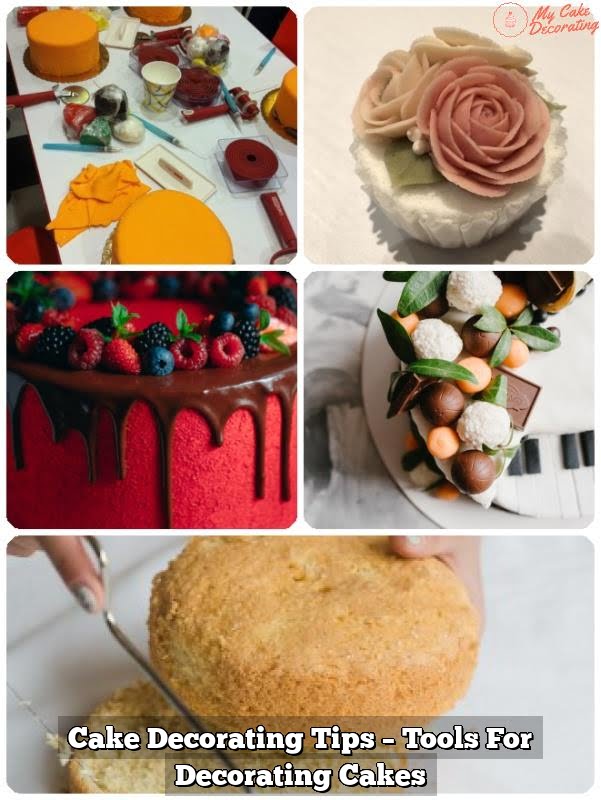Satin stitch embroidery in cake decorating is a delicate and intricate technique that adds a touch of elegance to any sweet creation. This method involves stitching lines close together to create a smooth, shiny surface that mimics the appearance of satin fabric. Whether you’re a baking enthusiast looking to elevate your skills or a professional pastry chef wanting to expand your repertoire, mastering satin stitch embroidery can take your cakes to the next level.
The history and origin of satin stitch embroidery can be traced back to ancient cultures where this decorative technique was used to embellish textiles and garments. Over time, it has evolved into an art form that is now being adapted and applied to cake decorating. The tradition of using satin stitch embroidery on cakes has become increasingly popular due to its ability to transform simple designs into stunning works of edible art.
Using satin stitch embroidery in cake decorating offers a plethora of benefits. Not only does it allow for intricate detailing and precise design work, but it also provides versatility in creating various textures and patterns on cakes. By understanding the tools and materials needed for this technique, as well as following step-by-step guides and incorporating helpful tips, you can achieve flawless satin stitch embroidery on your cakes, enhancing their visual appeal and overall presentation.
History and Origin of Satin Stitch Embroidery
Satin stitch embroidery is a popular technique in cake decorating that adds dimension and intricate detail to any design. But where did this technique originate, and how has it evolved over time? The history of satin stitch embroidery in cake decorating dates back centuries, with its roots traced back to traditional embroidery practices.
- In textile arts, the satin stitch is a common staple used to fill shapes with a smooth and glossy finish. The same concept was later adapted to cake decorating, where decorators use buttercream or fondant as their “thread” to create stunning designs on cakes.
- The origin of satin stitch embroidery in cake decorating can be attributed to the Victorian era when elaborate hand-embroidered fabrics were a sign of wealth and status. As baking and confectionery skills advanced, bakers began incorporating similar intricate designs on cakes using the satin stitch technique.
- Over the years, satin stitch embroidery in cake decorating has evolved with modern tools and techniques, allowing for more intricate and detailed designs than ever before. Despite its traditional roots, this method continues to captivate decorators with its timeless beauty and versatility.
Whether you are a novice baker or an experienced decorator, exploring the rich history of satin stitch embroidery can inspire you to create stunning masterpieces on your next cake project.
Benefits of Using Satin Stitch Embroidery in Cake Decorating
Satin stitch embroidery in cake decorating is a versatile technique that offers a multitude of benefits for bakers and decorators alike. Here are some of the advantages of using satin stitch embroidery on cakes:
1. Enhanced Detail and Texture: Satin stitch embroidery allows for intricate designs and patterns to be created on cakes, adding a unique and visually appealing texture to the finished product. The smooth, shiny appearance of satin stitching can mimic the look of actual embroidery, giving cakes a luxurious and elegant touch.
2. Customization and Personalization: One of the greatest benefits of utilizing satin stitch embroidery in cake decorating is the ability to personalize each creation. Whether it’s monograms, intricate floral patterns, or geometric designs, this technique allows decorators to customize cakes according to their clients’ preferences or specific themes.
3. Professional Finish: Satin stitch embroidery can elevate the overall look of a cake, giving it a professional finish that sets it apart from traditional icing techniques. The precise stitching creates clean lines and sharp details, making the cake appear more polished and refined.
Tools and Materials Needed for Satin Stitch Embroidery on Cakes
Embroidery Needle
One of the essential tools needed for satin stitch embroidery in cake decorating is an embroidery needle. These needles are finer and sharper than traditional sewing needles, making them ideal for creating intricate designs on cakes. The size of the needle will depend on the type of thread or icing being used, so it’s essential to have a variety of sizes on hand.
Satin Stitch Embroidery Thread
To achieve the smooth, glossy look of satin stitch embroidery on cakes, it’s important to use the right type of thread. Satin embroidery thread is typically made from silk or synthetic materials that have a sheen to them. This type of thread will give your designs a luxurious finish that mimics traditional satin stitching in fabric embroidery.
Piping Bags and Tips
In order to accurately apply the satin stitch embroidery technique on cakes, you’ll need piping bags and tips. Piping bags allow you to control the flow of icing or buttercream as you create your designs, while different tips can help you achieve various thicknesses and details in your embroidery work. It’s important to practice with different tips and techniques to find what works best for your specific design ideas.
Step-by-Step Guide on How to Achieve Satin Stitch Embroidery on Cakes
Satin stitch embroidery in cake decorating involves using a needle and edible thread to create intricate designs on cakes, much like traditional embroidery on fabric. This technique adds a unique and elegant touch to any cake design, making it stand out from the rest. Satin stitch embroidery allows for endless possibilities in terms of patterns, colors, and textures, making it a versatile and creative way to decorate cakes for various occasions.
To achieve satin stitch embroidery on cakes, you will need some essential tools and materials. These include a pointed food-safe needle, edible thread or yarn in various colors, a piping bag filled with royal icing or other edible adhesive, parchment paper or a pattern template, and of course, a frosted cake.
It is important to choose the right consistency of royal icing for your project to ensure that the embroidered design stays in place and adds dimension to the cake.
Begin by selecting a design or pattern for your satin stitch embroidery. You can either draw freehand directly onto the cake with an edible marker or transfer a design onto the cake using parchment paper and piping gel. Once you have your design ready, thread your needle with the desired color of edible thread and start stitching onto the cake following the outline of your pattern.
Be sure to space your stitches evenly and securely attach them to the cake using small dots of royal icing as you go along. Gradually fill in the entire design with satin stitches until you achieve the desired look.
| Tools | Materials |
|---|---|
| Pointed Food-Safe Needle | Edible Thread or Yarn |
| Piping Bag | Royal Icing |
| Parchment Paper | Frosted Cake |
Tips and Tricks for Perfecting Satin Stitch Embroidery Technique
Satin stitch embroidery is a technique that adds intricate and detailed designs to cakes, creating a beautiful and elegant look. Perfecting this technique requires practice, patience, and a few tips and tricks to ensure that the final result is flawless. Whether you’re a beginner or a seasoned cake decorator, here are some valuable tips to help you master satin stitch embroidery on cakes.
Use the Right Tools
One of the key elements to achieving a successful satin stitch embroidery on cakes is using the right tools. Make sure you have a good quality piping bag with a small round tip for precise detailing. Additionally, having the right consistency of royal icing or buttercream is crucial for smooth and clean lines. Practice with different tools and materials to find what works best for you.
Practice Makes Perfect
As with any new technique, practice is essential for perfecting satin stitch embroidery on cakes. Start by practicing on parchment paper or a practice board before moving on to decorating actual cakes. This will help you get comfortable with the piping technique and improve your confidence in creating intricate designs. Don’t get discouraged if your first few attempts are not perfect – keep practicing until you achieve the desired results.
Patience Is Key
Satin stitch embroidery requires attention to detail and patience to ensure each stitch is uniform and consistent. Take your time when piping each line or design element, focusing on keeping a steady hand and maintaining even pressure on the piping bag. Remember that perfection takes time, so be patient with yourself as you work towards mastering the satin stitch embroidery technique in cake decorating.
Creative Ideas for Incorporating Satin Stitch Embroidery Into Cake Designs
Another creative idea for incorporating satin stitch embroidery into cake designs is by adding personalized messages or monograms. This technique allows you to customize cakes for special occasions like weddings, birthdays, or anniversaries by intricately stitching names, dates, or initials onto the surface of the cake. Not only does this add a unique and personalized touch to your creation, but it also serves as a memorable keepsake for the recipients.
Furthermore, satin stitch embroidery can be used to create intricate lace designs on cakes, mimicking the delicate and ornate patterns found in traditional lace fabrics. By carefully layering stitches in a specific pattern, you can achieve a lace-like effect that enhances the overall elegance of your cake design. Whether you’re aiming for a vintage-inspired look or a more contemporary feel, incorporating lace details through satin stitch embroidery is sure to impress both clients and guests alike.
| Creative Ideas | Incorporating Satin Stitch Embroidery |
|---|---|
| Floral Patterns | Recreate roses, peonies, daisies |
| Geometric Patterns | Chevron or herringbone designs |
| Personalized Messages | Names, dates or initials |
Conclusion
In conclusion, Satin Stitch Embroidery in cake decorating is truly a versatile and beautiful technique that can elevate any cake design to the next level. Its history dates back centuries, showcasing the intricate artistry that has been admired through generations. The benefits of using satin stitch embroidery on cakes are endless – from adding texture and dimension to creating stunning visual effects.
To achieve satin stitch embroidery on cakes, you will need specific tools and materials such as piping bags, tips, and various colors of icing. Following a step-by-step guide can help you master this technique and bring your cake decorating skills to new heights. With practice and patience, you can perfect the satin stitch embroidery technique and impress your friends and family with your creations.
Whether you are a beginner or an experienced baker, incorporating satin stitch embroidery into your cake designs can result in truly unique and visually stunning desserts. From delicate floral patterns to bold geometric shapes, the creative possibilities are endless. So why not give satin stitch embroidery a try in your next baking project? You may just discover a new passion for this intricate art form within cake decorating.
Frequently Asked Questions
What Is Satin Stitches in Embroidery?
Satin stitches in embroidery are long, smooth, and tightly packed stitches that create a glossy, satin-like finish on the fabric. They are often used to fill in shapes or letters for a sleek and polished look.
What’s the Difference Between Straight Stitch and Satin Stitch?
The main difference between straight stitch and satin stitch is the appearance and texture they create. While a straight stitch is a basic stitch that creates individual straight lines, satin stitch covers a larger area with continuous, smooth stitches to create a solid filled-in appearance.
What Is the Difference Between Zigzag and Satin Stitch?
Zigzag stitches differ from satin stitches in their appearance and function. Zigzag stitches are formed by alternating diagonal stitches that create a zigzag pattern, providing flexibility and durability for edges or seams. On the other hand, satin stitches are densely packed parallel stitches that give a shiny, solid finish to embroidery designs.

Welcome to my blog about home and family. This blog is a place where I will share my thoughts, ideas, and experiences related to these important topics. I am a stay-at-home mom with two young children. I hope you enjoy reading it! and may find some helpful tips and ideas that will make your home and family life even better!





